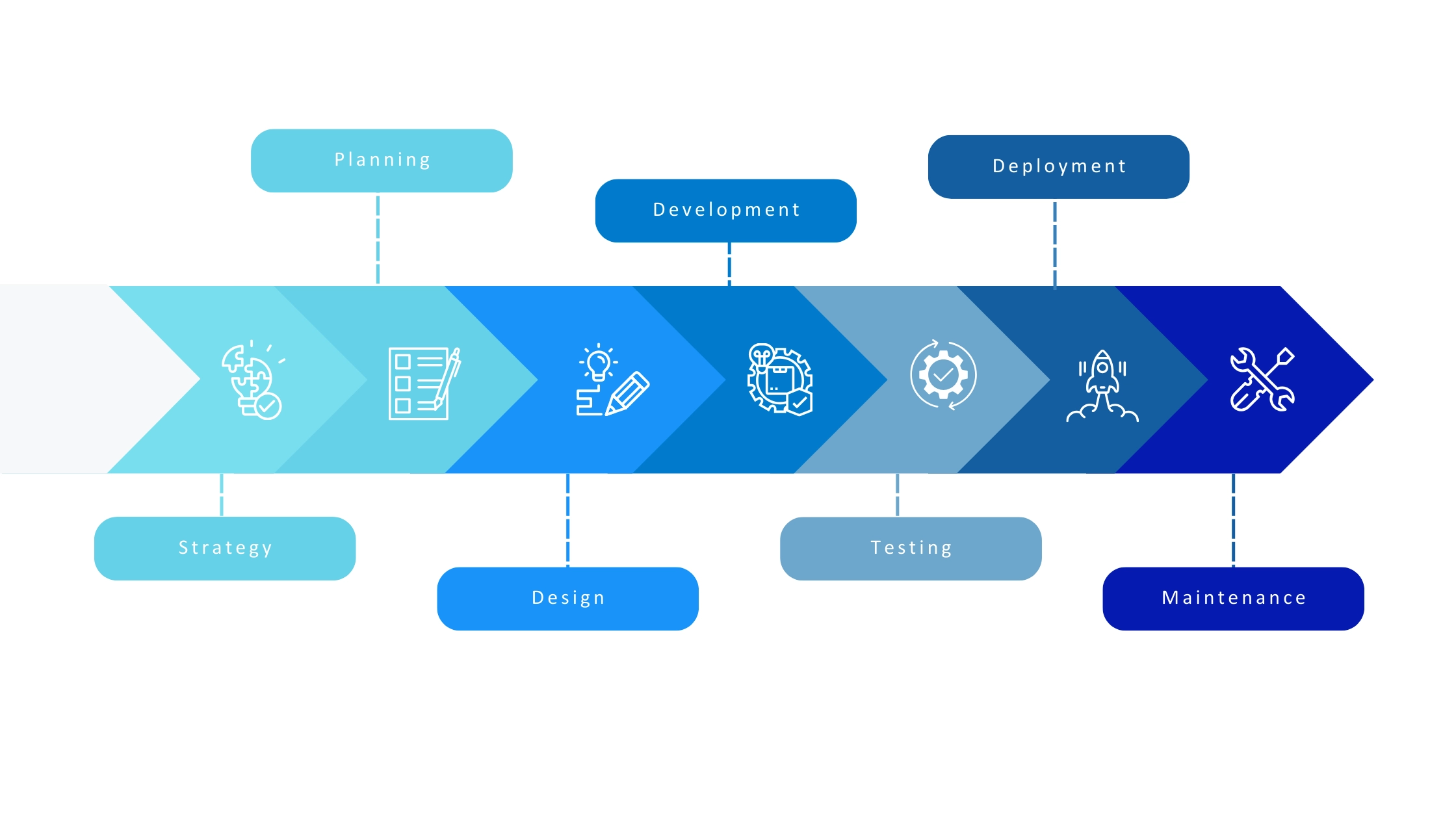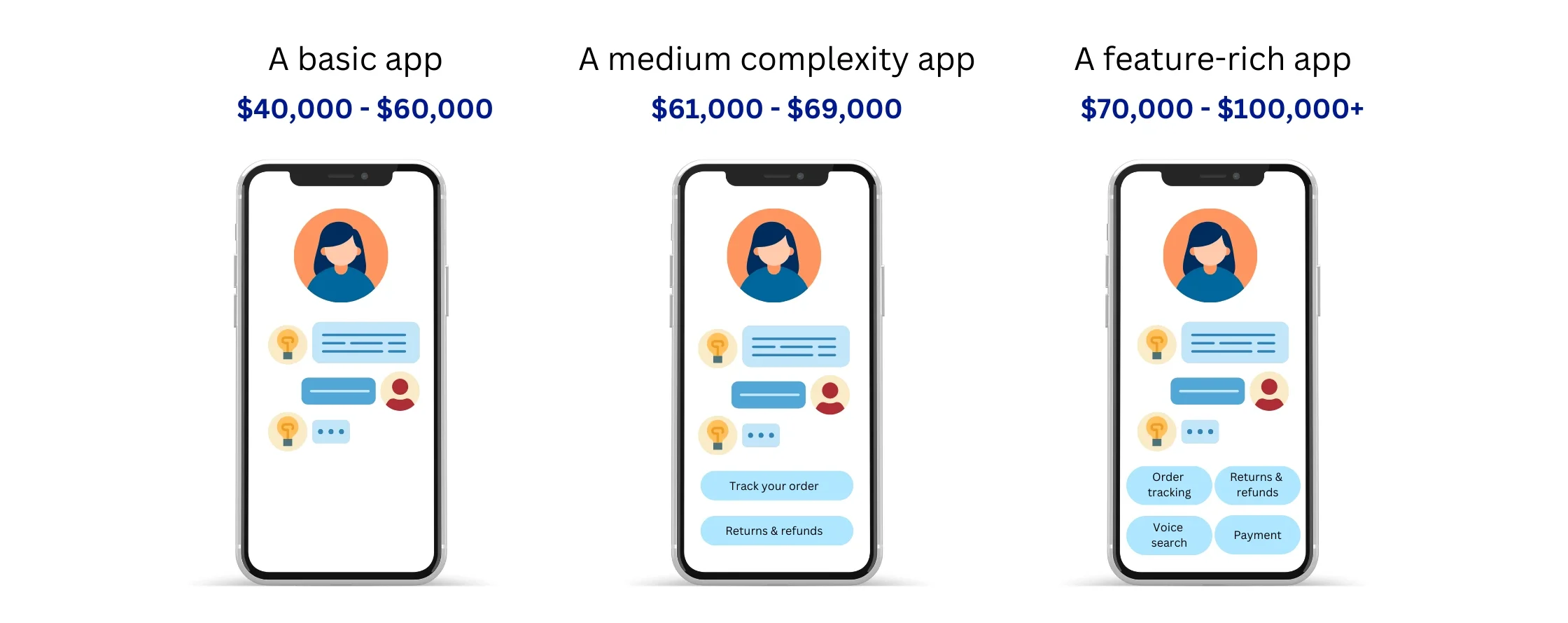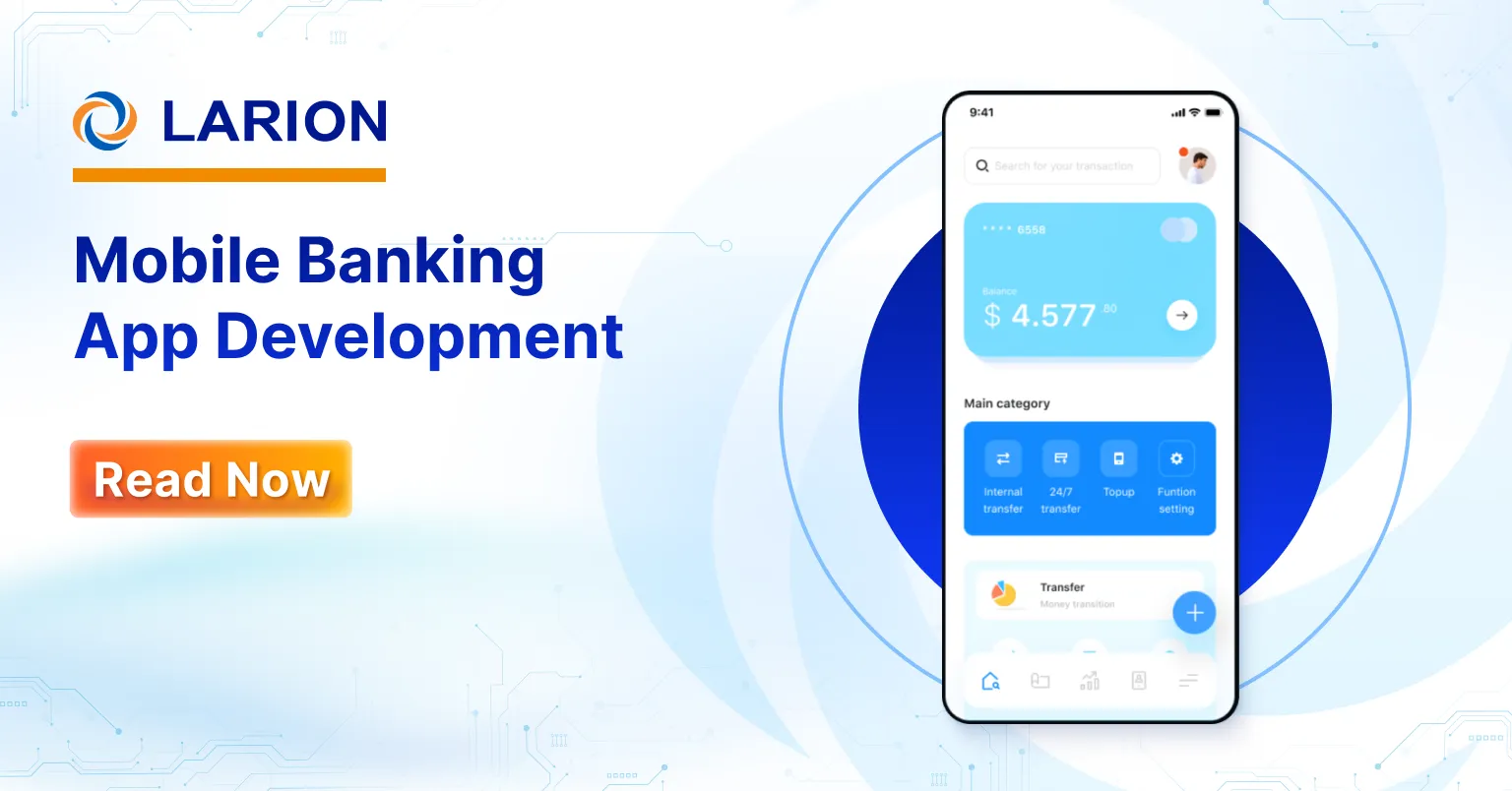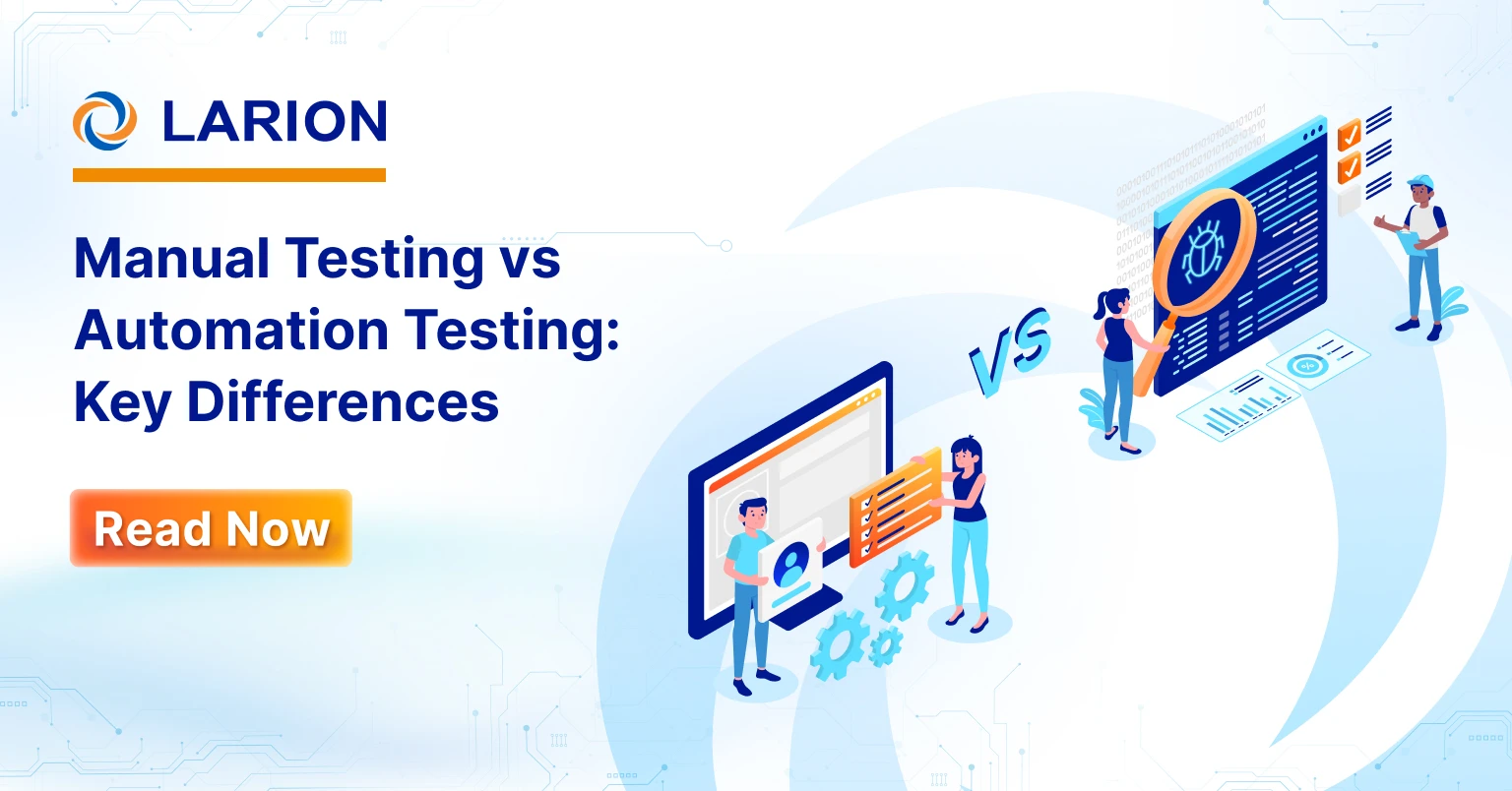
In today’s crowded app marketplace, businesses struggle to create mobile experiences that truly resonate with their audience, often leading to high churn rates and low engagement. According to Business of Apps, the iOS has an average churn rate of 96.3% by day 30, while Android is higher with 97.9% churn
A generic app that doesn’t align with your brand or user needs can quickly fall flat, leaving you with a product that fails to deliver the results you expected. Custom mobile app development offers a way out of this cycle. By building an app designed specifically for your business and users, you can create a unique, engaging experience that drives retention, increases satisfaction, and sets your brand apart in a competitive market
But how do you create one that truly works? Dive into our blog to discover everything you need to know to build an impactful mobile app that meets your business goals and engages your users
What is Custom Mobile App Development and why does it matter?
Custom mobile app development refers to the creation of tailor-made mobile applications designed specifically to meet the unique needs and goals of a business. Unlike off-the-shelf solutions, custom mobile apps provide benefits like:
- Personalization: These mobile apps are made with customized features and functionalities to align with your unique business requirements.
- Scalability: These apps often have the ability to grow with your expanding business and its needs.
- Enhanced security: These apps act as a shield for protecting data as they’ve got security protocols.
- Competitive advantage: Unique features of your business are highlighted that set you apart in the market.
According to a 2023 study, businesses that invest in custom mobile app development experience a 45% increase in operational efficiency and a 30% improvement in customer satisfaction compared to those using generic solutions.
Types of Custom Mobile App Development

Different app types come with distinct features and advantages. Knowing these options can guide you in selecting the best approach for your mobile app development
Native App Development
Native app development focuses on creating applications specifically for a single operating system or platform, such as iOS or Android. This approach leverages the platform’s native programming languages and dedicated development tools like Xcode and Android Studio, ensuring optimal performance, seamless integration, and a superior user experience.
Technologies: Swift/Objective-C for iOS; Kotlin/Java for Android
Key benefits:
- Optimal performance: Native app development is optimized for its respective platforms, delivering faster load times and a smoother user experience
- Full access to device features: This app type integrates smoothly with device capabilities, such as the camera, GPS, and push notifications.
- Robust security: Platform-specific security standards ensure better data protection and user privacy.
- Enhanced user experience: They are designed following platform-specific guidelines, native apps offer customer-friendly interfaces and reliable functionality.
Limitations:
- Higher costs: Separate development efforts are required for each platform, increasing costs.
- Extended timelines: Platform-specific coding can lengthen development times compared to cross-platform alternatives.
Web App Development
Web app development involves creating software applications that are accessed via web browsers, providing functionality similar to native apps without requiring installation. By leveraging responsive design, web apps ensure a seamless and consistent user experience across various devices, including desktops, tablets, and smartphones.
Technologies: HTML, CSS, JavaScript.
Key benefits:
- Cost-effective development: Using these apps we don’t need to go for separate apps for different platforms.
- Ease of access: These apps are accessible instantly via a browser without requiring downloads or updates.
- Cross-platform compatibility: Works smoothly on any device with a browser.
- Simplified maintenance: Its centralized updates ensure all users have the latest version.
Limitations:
- Limited functionality: Restricted access to device-specific features such as GPS, camera, or push notifications.
- Performance dependence on internet connectivity: They function optimally only when there is a stable Internet connection.
- Lower user engagement: Lack of app store visibility and offline capability can hinder retention.
Hybrid App Development
Hybrid app development combines elements of both native and web apps, allowing applications to run across multiple platforms using a single codebase. Built with web technologies like HTML, CSS, and JavaScript, these apps are wrapped in a native container to access device features. This approach enables businesses to achieve the flexibility of web apps while offering a user experience similar to native applications.
Technologies: Ionic, Apache Cordova, React Native.
Key benefits:
- Cost-effective development: A single codebase reduces the need for separate development for iOS and Android.
- Faster time-to-market: Streamlined development allows businesses to launch apps quickly.
- Offline support: Many hybrid apps can store data locally, enabling offline functionality.
- Ease of maintenance: Updates are more manageable since changes are made to a unified codebase.
Limitations:
- Performance constraints: Compared to native apps, hybrid apps may not perform as efficiently, especially for resource-intensive tasks.
- User experience: This may lack the smooth look and feel of native apps.
- Device-specific features: Limited access to advanced device-specific features and APIs.
Progressive Web App Development
Progressive Web Apps (PWAs) are web applications that provide a native app-like experience by leveraging modern web technologies. They can be accessed via a web browser but are designed to function reliably even under poor network conditions and can be installed on the user’s device like a traditional app.
Technologies: HTML, CSS, JavaScript
Key benefits:
- Fast & responsive: PWAs load quickly, ensuring a smooth user experience.
- Offline capability: Service Workers cache resources, allowing the app to function without internet connectivity.
- Cross-platform functionality: Accessible on multiple devices through a single build.
- No app store dependency: Users can add PWAs to their home screens directly from a browser.
- SEO-friendly: PWAs are indexed by search engines, enhancing more visibility and capturing the target audience.
Limitations:
- Limited device integration: PWAs lack full access to device hardware, like Bluetooth or advanced camera controls.
- Browser compatibility: Some features may not work on older browsers or devices.
- User perception: Users may prefer native apps over browser-based ones for specific use cases.
Cross-platform app development
Cross-platform app development enables the creation of applications that run on multiple platforms, such as iOS and Android, using a single codebase. By leveraging specialized frameworks and tools, developers can write code once and deploy it across different operating systems, significantly reducing development time and costs while ensuring a consistent user experience.
Technologies: Flutter, Xamarin, React Native.
Key benefits:
- Cost-efficiency: Developing one codebase for multiple platforms reduces costs compared to native app development.
- Faster time-to-market: Reusable code expedites the development process, allowing quicker launches.
- Broad user reach: With support for multiple operating systems, businesses can target diverse audiences without extra overhead.
- Consistent UI/UX: Cross-platform frameworks ensure design consistency across devices
Limitations:
- Performance differences: Cross-platform app development may not achieve the same level of performance as native apps, particularly for resource-intensive tasks.
- Limited access to native features: Full utilization of platform-specific features (e.g., ARKit or advanced camera APIs) might require additional development.
- Framework dependency: Dependence on third-party frameworks could pose risks if the framework is discontinued in the future or if it is poorly maintained.
| Native app development | Cross-platform app development | Hybrid app development | PWA Development | Web app development | |
| Performance | High | Good (can be near native) | Moderate | Good | Moderate |
| User experience | Best (smooth, intuitive, platform-specific) | Good (but can vary) | Moderate (can feel like a web page) | Good (aims for app-like feel) | Varies (depends on web design) |
| Device features access | Full | Near-full | Limited | Limited (depends on browser capabilities) | Very limited |
| Costs | High
($100K+) |
Medium ($60K–$120K) | Medium ($50K–$100K) | Low
($20K–$60K) |
Low
($10K–$50K) |
| Development language | Platform-specific (Swift, Kotlin) | JavaScript, Dart (React Native, Flutter) | HTML, CSS, JavaScript with native shell | HTML, CSS, JavaScript | HTML, CSS, JavaScript |
| Best for | Resource-intensive apps (games, AR/VR) | Apps targeting multiple platforms without sacrificing too much performance, utility or business apps | Simple apps, MVPs, internal tools, apps where cost is a primary concern | E-commerce, news sites, content-heavy apps, apps requiring offline access and quick development | Simple applications, web-based tools, apps where broad reach is paramount |
Depending on the type of mobile app development, you’ll need to select the appropriate programming language to ensure your app’s performance and scalability. To help navigate your options, check out our list of the top mobile app programming languages for developers
Mobile App Development Process

The mobile app development lifecycle follows a structured approach that transforms your vision into a functional, user-friendly product. Here’s a step-by-step breakdown of the mobile app development process:
1. Strategy
The foundation of a successful mobile app lies in a well-defined strategy. This phase involves:
- Define goals: Identify the app’s purpose. Are you solving a problem, engaging users, or driving revenue? Be clear about what success looks like.
- Understand your audience: Conduct market research and competitor analysis to learn about your users’ needs, preferences, and pain points.
- Align business goals: Ensure the app aligns with your overall business strategy, enhancing your brand’s value and market position
2. Planning
Planning bridges the gap between your app concept and its execution.
- Develop a roadmap: Outline the app’s journey, including key milestones and phases.
- Define use cases: Capture functional requirements by visualizing how users will interact with the app.
- Timeline & budget: Establish realistic timelines and allocate a budget that considers potential risks.
- Risk management: Identify challenges that could arise during development and outline strategies to mitigate them.
3. Design
The design phase is where your app starts to take shape visually and functionally.
- UI/UX principles: Create a user-friendly, visually appealing interface that delivers a smooth experience.
- Steps to design success:
– Information architecture: Organize content and features logically for intuitive navigation.
– Wireframes & mockups: Build static layouts to visualize the app’s structure and style.
– Interactive prototypes: Test workflows and interactions to identify any usability issues early on.
- Prioritize accessibility: Ensure the app is inclusive and caters to users with diverse abilities.
4. App Development
This phase involves building the app’s front-end and back-end systems.
- Front-End development: Focus on creating smooth user interfaces that look great on all devices.
- Back-End development: Implement server-side logic, database management, and app functionality.
- Tech stack selection: Choose programming languages, frameworks, and tools that align with the app’s goals and scalability.
- API Integration: Incorporate third-party APIs for added features like payment gateways, geolocation, or social media sharing.
5. Testing
Testing ensures the app meets quality standards and delivers a smooth user experience.
- Quality assurance: Use functional, performance, usability, and security tests to identify and fix issues.
- Automation: Streamline repetitive tests to save time and enhance efficiency.
- Beta testing: Release the app to a small group of users to gather real-world feedback and fine-tune it before launch.
6. Deployment
Once your app is ready, it’s time to go live.
- App store submission: Publish the app on platforms like Google Play and the Apple App Store, ensuring compliance with their guidelines.
- Marketing: Implement a marketing strategy to promote your app and drive downloads, including social media campaigns, influencer collaborations, and press releases.
7. Maintenance
Launching your app is just the beginning—maintaining it ensures its longevity.
- Updates & upgrades: Regularly release updates to fix bugs, improve performance, and add new features.
- Performance monitoring: Use analytics tools to track user behavior, crash reports, and app performance.
- Security enhancements: Stay ahead of evolving threats by regularly updating security protocols.
- User feedback: Actively gather and implement feedback to improve user satisfaction.
How Much Does Custom Mobile App Development Cost?
Determining the mobile app development cost is often one of the most challenging parts of the development process. This complexity arises from the numerous factors that influence app development costs.
The most obvious factor is app complexity. Naturally, the more features and functionalities an app has, the higher the development costs. However, quantifying complexity isn’t always straightforward—especially if the app includes innovative features that haven’t been done before. This can easily lead to underestimating both the time and budget needed to bring the idea to life.

Source: Upwork
Another major determinant of mobile app development cost is developer rates, which vary significantly depending on location. For example, developers in Vietnam often charge about half of what their counterparts in the U.S. would, even with comparable skill levels. This is why offshore software development is a popular strategy for managing app development costs effectively.
If you plan to launch your app on multiple platforms, this will also impact the budget. The good news is that opting for cross-platform frameworks, rather than building separate native apps, can significantly reduce costs.
Additionally, specific project requirements can further influence the overall mobile app development cost. Factors such as integrating with existing systems, using third-party APIs, or migrating data from legacy databases can either increase or decrease development expenses depending on their complexity.
Common Mistakes to Avoid in Custom Mobile App Development
Here are some common pitfalls to avoid during the mobile app development process
Failing to understand what your users want
Having an innovative app idea alone doesn’t guarantee success. To turn your idea into a thriving product, you need a deep understanding of your target market. The more you know about your users, the better you can design and develop an app that truly meets their needs. That’s why user research is essential—not just for development but also for effective promotion, both of which are key to your app’s success.
Avoid making assumptions about what your potential users want or how they behave. At LARION, we help clients validate product-market fit by creating Minimum Viable Products (MVPs). This approach allows businesses to gather valuable feedback early, refine their app based on actual user insights, and ensure their product aligns with market needs before a full-scale launch
Not considering scalability
One of the most common mistakes in custom mobile app development is failing to design with scalability in mind. When an app isn’t built to scale from the start, it can face serious issues as it grows, such as slow loading times, frequent crashes, data bottlenecks, and security vulnerabilities
For businesses, this means not only dissatisfied customers but also the need to invest heavily in re-architecting the app, which can be both time-consuming and costly. By prioritizing scalability from the beginning, businesses can save resources in the long run, maintain app performance during growth, and quickly respond to market demands or new opportunities.
Neglecting post-launch support
It’s a common misconception that the mobile app development process ends when the app launches. That’s far from the case. In reality, development never stops. No app is perfect, and you’ll need to make improvements on a regular basis. In general, the ideal update frequency falls between 20 to 40 days.
Regular updates are essential for enhancing the user experience, fixing bugs, and ensuring compatibility with the latest operating systems across different devices. If you exhaust your budget on the initial launch, you’ll face financial challenges when it’s time to make critical updates.
At LARION, we understand the importance of ongoing support and maintenance after your app goes live. That’s why we offer comprehensive, full-service solutions to ensure your app remains functional, up-to-date, and optimized for the long term.
Emerging Trends in Custom Mobile App Development in 2025
With rapid technology advancements and growing consumer demands, custom mobile app development is set to witness significant changes this year
5G-Enhanced App Experience
Global 5G connections surpassed 2 billion in Q3 2024, marking a 48% year-over-year increase, with over 170 million new connections added in that quarter alone. As 5G becomes mainstream, custom mobile app development is evolving to leverage cloud capabilities and designing for resource-intensive features.
The technology’s high-speed, low-latency network will also fuel the integration of real-time functionalities like advanced live streaming, rapid data transfers, and immersive AR/VR experiences. This robust infrastructure will particularly benefit apps centered around virtual shopping and high-definition video conferencing, allowing them to deliver seamless, high-performance experiences.
Foldable Devices
Since the launch of the Samsung Galaxy Fold, foldable devices have been making a strong comeback. The foldable smartphone market has seen remarkable growth in recent years and is projected to expand from $25.1 billion in 2024 to $30.55 billion in 2025, with a compound annual growth rate (CAGR) of 21.7%.
As a result, development companies are increasingly incorporating foldable devices into their design strategies. Developers will need to ensure that apps are adaptable to various requirements, including resizable interfaces, compatibility with different screen ratios, and support for multi-screen and multi-resume functionalities.
Internet of Things (IoT) App Integration
The IoT is reshaping mobile application trends by connecting a vast array of devices using cutting-edge technologies like near field communication (NFC), beacons, and sensors. This interconnected network enables users to automate and control devices effortlessly, offering unparalleled unmatched level of convenience and efficiency
As the IoT market expands, revenue is projected to grow dramatically, increasing from $21.4 billion in 2025 to over $40 billion by 2030, with a CAGR of 14%, driving innovation in sectors like healthcare, automotive and consumer electronics.
Mobile app technology plays a pivotal role in the IoT ecosystem, from managing wearable GPS devices to controlling smart home systems. By 2025, advancements will focus on features like predictive maintenance, stronger security frameworks, and seamless device integration to enhance efficiency and user experience. As IoT becomes an integral part of everyday life, its influence on custom mobile app development will only intensify, creating a more interconnected and automated world
Security
In the last quarter of 2023 alone, around 440,000 malicious installation packages were detected on mobile devices worldwide, emphasizing the need for robust security in custom mobile app development. To protect users from data breaches and privacy violations, developers must prioritize implementing anti-tampering technologies, adhering to secure coding practices, and adopting security-as-a-service solutions..
In addition to complying with data privacy regulations like GDPR or CCPA, developers should also use tools like mobile RASP (Runtime Application Self-Protection) and code obfuscation, which protect apps from unauthorized access and prevent malicious exploitation of vulnerabilities. Furthermore, integrating secure payment gateways ensures safe transactions, offering users peace of mind when making purchases through the app
Artificial Intelligence (AI) and Machine Learning (ML)
Artificial Intelligence (AI) and Machine Learning (ML) are at the forefront of mobile app innovation, transforming apps into smarter, more adaptive tools. According to Next Move Strategy Consulting, the AI market is projected to reach $1.84 trillion by 2030, with a CAGR of 32.9%
Technologies like Apple’s Core ML 3 enable developers to integrate advanced features such as text and image classification, enhancing content management and discovery. Meanwhile, virtual assistants like Siri and Alexa have set new standards for voice user interfaces (VUI), making apps more accessible through speech recognition and conversational AI
Conclusion
Custom mobile app development is not just a trend; it’s a powerful strategy for businesses that want to optimize operations, boost user engagement, and achieve their unique business goals. By embracing tailored solutions, businesses can ensure scalability, security, and smooth integration with modern technologies. Understanding app types, the mobile app development process, and cost factors allow for well-informed decisions that drive impactful results.
With our team of 200 experienced professionals and our experience of working for two decades with international clients, we are well-equipped to deliver successful mobile applications, we are here to turn your vision into reality. From strategic planning to deployment, we specialize in crafting apps that align with your business objectives and resonate with your target audience.
Ready to bring your vision to life? Contact us today to start your journey towards a transformative mobile app for your business.





